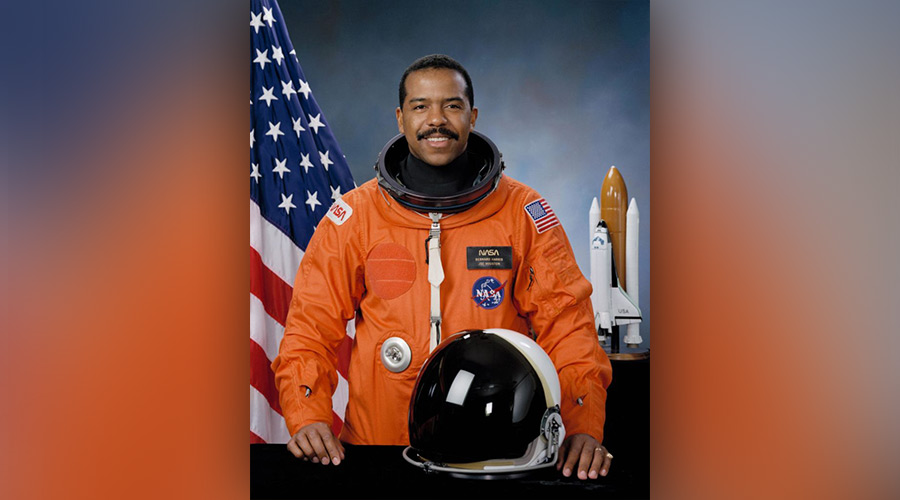There are many different paths to success in STEM fields. In the case of Dr. Bernard Harris, he began his career as a physician and later pivoted to apply his medical experience in the aerospace sector.
NASA selected Dr. Harris to become an astronaut in 1990, and he later became the first Black American astronaut to walk in space. In 2025, his achievements were honored when he was inducted into the Astronaut Hall of Fame. His success and remarkable career were the results of years of dedication and perseverance.
How Dr. Bernard Harris Became a NASA Astronaut
Education played a crucial role in Dr. Harris’s journey to becoming a NASA astronaut. As with many STEM careers, his path was not a straight line. He explored different interests and fields before ultimately joining NASA as an astronaut. Major steps along his career include:
- 1978: Dr. Harris received a B.S. in Biology from University of Houston.
- 1982: He earned a doctorate in medicine from Texas Tech University School of Medicine.
- 1985: Dr. Harris completed an internal medicine residency at the Mayo Clinic.
- 1987: He completed a National Research Council Fellowship at NASA Ames Research Center.
- 1988: He trained as a flight surgeon at the Aerospace School of Medicine, Brooks Air Force Base, San Antonio, TX.
- 1991: Dr. Harris officially became a NASA astronaut.
- 1996: After leaving NASA, he earned a master’s degree in biomedical science from the University of Texas Medical Branch at Galveston.
Dr. Harris built a foundation in medicine before applying his expertise to the aerospace sector, ultimately leading to his selection as a NASA astronaut. During his time at NASA, he logged more than 438 hours in space. In February 1995, he served as Payload Commander on the STS-63 flight mission, where he completed his spacewalk.
How STEM Education Creates Opportunities for Students
Following in the footsteps of astronauts like Dr. Harris requires years of dedication and a strong foundation in STEM education. STEM programs and curricula create opportunities by helping students develop key skills that are in high demand across the science and technology sectors.
Some of the essential skills STEM programs focus on include:
- Critical thinking and problem-solving skills
- Data literacy
- Creativity and innovation
- Adaptability
- Collaboration and communication
How Robert F. Smith Supports STEM Students With Philanthropy
Just as Dr. Harris pivoted from medicine to NASA, Robert F. Smith pivoted from working as a chemical engineer to becoming an investor and entrepreneur. Since then, he has focused on creating pathways to success for STEM students with his philanthropic giving.
In 2016, Smith made one of two significant donations to his alma mater, Cornell University, contributing $30 million. Under Smith’s leadership as the founding director and President, Fund II Foundation separately contributed another $20 million. These gifts funded efforts to recruit students from communities that lack access to opportunities and support them in STEM fields through scholarships and fellowships. The university recognized Smith for this gift by renaming its School of Chemical and Biomolecular Engineering the Robert Frederick Smith School of Chemical and Biomolecular Engineering.
In 2022, Smith made a $15 million gift to help Cornell engineering students with financial aid, with the creation of three funds:
- Robert F. Smith Undergraduate Scholarship Fund
- Robert F. Smith Graduate Fellowship Fund
- Robert F. Smith Student Success Fund
These gifts not only provide financial support but also help students with professional development and mentorship.
Learn more about how Smith is helping STEM students create pathways for success by following him on LinkedIn.
